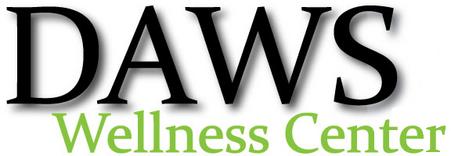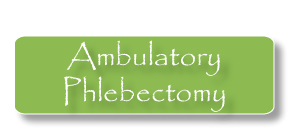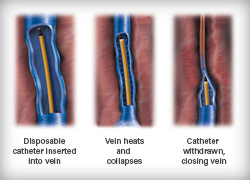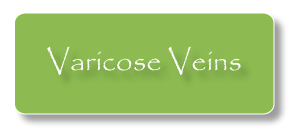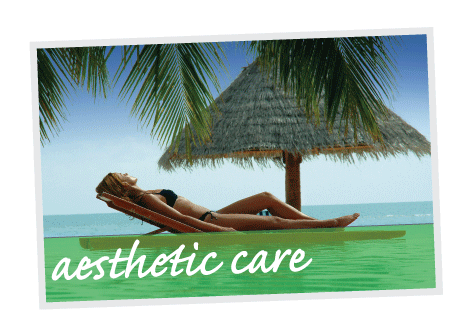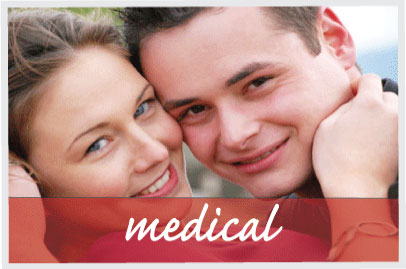
What are Varicose Veins?
Varicose veins are most often swollen, gnarled veins that most frequently occur in the legs, ankles and feet. They are produced by a condition known as venous insufficiency or venous reflux, in which blood circulating through the lower limbs does not properly return to the heart but instead pools up in the distended veins.
More than 25 million Americans suffer from venous reflux disease. The symptoms can include pain and fatigue in the legs, swollen ankles and calves, burning or itching skin, skin discoloration and leg ulcers. In less severe cases, thin, discolored vessels – “spider veins” – may be the only symptom.
Gender and age are two primary risk factors in the development of venous reflux. An estimated 72% of American women and 42% of men will experience varicose veins symptoms by the time they reach their sixties. Women who have been pregnant more than once and people who are obese, have a family history of varicose veins or spend a great deal of time standing have an elevated risk for the condition, but it can occur in almost anyone at almost any age. Varicose veins never go away without treatment and frequently progress and worsen over time.
Severe varicose veins can have a significant impact on the lives of people who work on their feet – nurses, teachers, flight attendants et al. Research has shown that more than two million workdays are lost each year in the US.
VNUS Closure
Initial Consultation
During your initial consultation, your legs will be examined. Your doctor may take photos and draw a simple sketch of your legs, mapping out the areas affected by spider veins or other problems. During the examination, you will be checked for signs of more serious "deep vein" problems, often indicated by swelling, sores, or skin changes at the ankle. A hand-held Doppler ultrasound device is sometimes used to detect any backflow within the venous system. This is referred to as reflux.
If such problems are identified, you may be a candidate for the VNUS Closure procedure. This procedure is performed instead of the traditional vein stripping. Problems with the larger veins must be treated first, or sclerotherapy and/or laser treatments of the surface veins will be unsuccessful.
During the initial consultation we will ask you about any other problems you may have with your legs, such as pain, aching, itching or tenderness. You will be asked about your medical history, your family history, medications and conditions that would preclude you from having treatment.
Medical insurance usually covers VNUS Closure for the treatment of varicose veins but does not cover cosmetic procedures such as sclerotherapy and laser treatments.
Preparing For the Procedure
You will receive specific instructions from your physician on how to prepare for your treatment. Carefully following these instructions will help the procedure go more smoothly.
You'll be instructed to drink lots of water for a couple of days before the procedure. Being well hydrated helps Dr. Daws to get access to the diseased vein.
On the day of the procedure you will be instructed not to apply any type of moisturizer, sunblock or oil to your legs. You may want to bring shorts to wear during the procedure, as well as your physician-prescribed support hose, and comfortable, loose, pants to wear home.
Upon arrival to Daws Wellness Center you will be given a mild sedative to help you relax. Be sure to have someone to drive you home afterward.
When scheduling your procedure, keep in mind that your legs may be bruised or slightly discolored for some weeks afterward. You probably won't be comfortable wearing shorts, a swimsuit or mini skirts until after your legs have cleared up a bit.
The VNUS Closure procedure is a minimally invasive treatment alternative with less pain and less bruising when compared to traditional vein stripping surgery and laser treatment. Using the Closure system, physicians close the diseased veins by inserting the Closure catheter into a vein and heating the vein wall using temperature-controlled Radio Frequency energy. Heating the vein wall causes collagen in the wall to shrink and the vein to close. After the vein is sealed shut, blood then naturally reroutes to healthy veins.
Venous reflux or venous insufficiency develops when the valves that usually keep blood flowing out of your legs become damaged or diseased.
After Your Treatment
Many patients can resume normal activities immediately. For a few weeks following the treatment, we recommend a regular walking regimen and suggest you refrain from very strenuous activities (heavy lifting, aerobic exercise, for example) or prolonged periods of standing. Most patients report a noticeable improvement in their symptoms within 1-2 weeks following the procedure. Because treatment with Closure is minimally invasive and is catheter-based, it results in little to no scarring.
Patient's Frequently Asked Questions
Superficial Venous Reflux Treatment
1. What is superficial venous reflux?
Superficial venous reflux is a condition that develops when the valves that usually keep blood flowing out of your legs become damaged or diseased. This causes blood to pool in your legs. Common symptoms of superficial venous reflux include pain, swelling, leg heaviness and fatigue, as well as varicose veins in your legs.
2. What is the Closure™ procedure?
The Closure procedure is a minimally invasive treatment for superficial venous reflux. A thin catheter is inserted into the vein through a small opening. The catheter delivers radiofrequency (RF) energy to the vein wall, causing it to heat, collapse, and seal shut.
3. How does it work to treat superficial venous reflux?
Since valves can't be repaired, the only alternative is to re-route blood flow through healthy veins. Traditionally, this has been done by surgically removing (stripping) the troublesome vein from your leg. The Closure procedure provides a less invasive alternative to vein stripping by simply closing the problem vein instead. Once the diseased vein is closed, other healthy veins take over and empty blood from your legs.
4. How is the Closure procedure different from vein stripping?
During a stripping procedure, the surgeon makes an incision in your groin and ties off the vein, after which a stripper tool is threaded through the saphenous vein and used to pull the vein out of your leg through a second incision just above your calf.
In the Closure procedure, there is no need for groin surgery. Instead, the vein remains in place and is closed using a special (Closure) catheter inserted through a small puncture. This may eliminate the bruising and pain often associated with vein stripping (i.e., that may result from the tearing of side branch veins while the saphenous vein is pulled out). Vein stripping is usually performed in an operating room, under a general anesthetic, while the Closure procedure is performed on an outpatient basis, typically using local or regional anesthesia.
Three randomized trials of the Closure procedure vs. vein stripping, including the most recent multi-center comparative trial, show very similar results. In the multi-center comparative trial, the Closure procedure was superior to vein stripping in every statistically significant outcome. In the study, 80.5% of patients treated with the Closure procedure returned to normal activities within one day, versus 46.9% of patients who underwent vein stripping. Also, Closure patients returned to work 7.7 days sooner than surgical patients. Patients treated with the Closure procedure had less postoperative pain, less bruising, faster recovery and fewer overall adverse events.
5. How long does the Closure procedure take?
The Closure procedure takes approximately 45-60 minutes, though patients normally spend 2-3 hours at the medical facility due to normal pre- and post-treatment procedures.
6. Is the Closure procedure painful?
Patients report feeling little, if any, pain during the Closure procedure. Your physician will give you a local or regional anesthetic to numb the treatment area.
7. Will the procedure require any anesthesia?
The Closure procedure can be performed under local, regional, or general anesthesia.
8. How quickly after treatment can I return to normal activities?
Many patients can resume normal activities immediately. For a few weeks following the treatment, your doctor may recommend a regular walking regimen and suggest you refrain from very strenuous activities (heavy lifting, for example) or prolonged periods of standing.
9. How soon after treatment will my symptoms improve?
Most patients report a noticeable improvement in their symptoms within 1-2 weeks following the procedure.
10. Is there any scarring, bruising, or swelling after the Closure procedure?
Patients report minimal to no scarring, bruising, or swelling following the Closure procedure.
11. Are there any potential risks and complications associated with the Closure procedure?
As with any medical intervention, potential risks and complications exist with the Closure procedure. All patients should consult their doctors to determine if their conditions present any special risks. Your physician will review potential complications of the Closure procedure at the consultation , and can be reviewed in the safety summary. Potential complications can include: vessel perforation, thrombosis, pulmonary embolism, phlebitis, hematoma, infection, paresthesia (numbness or tingling) and/or skin burn.
12. Is the Closure procedure suitable for everyone?
Only a physician call tell you if the Closure procedure is a viable option for your vein problem. Experience has shown that many patients with superficial venous reflux disease can be treated with the Closure procedure.
13. Is age an important consideration for the Closure procedure?
The most important step in determining whether or not the Closure procedure is appropriate for you is a complete ultrasound examination by your physician or qualified clinician. Age alone is not a factor in determining whether or not the Closure procedure is appropriate for you. The Closure procedure has been used to treat patients across a wide range of ages.
14. How effective is the Closure procedure?
Data from a prospective multicenter study have shown 97.4% vein occlusion 1 year post-treatment.
15. What happens to the treated vein left behind in the leg?
The vein simply becomes fibrous tissue after treatment. Over time, the vein will gradually incorporate into surrounding tissue. One study reported that 89% of treated veins are indistinguishable from other body tissue one year after the Closure procedure was performed.
16. Is the Closure treatment covered by my insurance?
Many insurance companies are paying for the Closure procedure in part or in full. Most insurance companies determine coverage for all treatments, including the Closure procedure, based on medical necessity. The VNUS Closure procedure has positive coverage policies with most major health insurers. Your physician can discuss your insurance coverage further at the time of consultation.
17. What are patients saying about the Closure procedure?
98% of patients who have undergone the Closure procedure are willing to recommend it to a friend or family member with similar leg vein problems.
Sclerotherapy for Varicose Veins
A common form of treatment for varicose veins is sclerotherapy. It is a simple and easy procedure designed to permanently remove varicose veins leaving your legs looking younger and healthier. This is an in-office procedure where veins are injected with a solution, using tiny needles, which causes them to collapse and fade from view. The procedure typically improves not only the cosmetic appearance but associated symptoms as well. The procedure normally takes 15 to 30 minutes, depending on how many varicose veins are treated. This procedure requires no anesthesia and discomfort is minimal. You may need repeated sessions and many injections per session depending on the extent of the varicose veins.
Ambulatory Phlebectomy
Gone are the days of the surgical procedure called “vein stripping” and the weeks of painful recovery. Finally there is a simple, minimally invasive procedure that eliminates varicose veins and the pain and swelling associated with this condition. Clinical data demonstrates that 98% of patients experience long-term relief of symptoms and improved appearance.
VARICOSE VEIN TREATMENTS
